death of newspapers
description: a term that refers to the decline of newspapers due to the rise of digital media
67 results
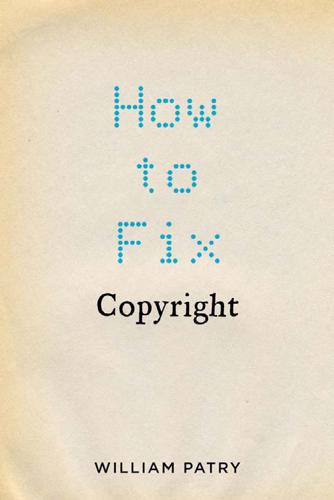
How to Fix Copyright
by
William Patry
Published 3 Jan 2012
Newspapers: A Failure to Adapt There is no question newspapers have serious problems, but those problems are business problems and cannot be solved by additional legal rights.To listen to some in the newspaper business, the industry was destroyed by Internet search engines. As we shall see, the decline in the newspaper business has been going on for a long time, well before the advent of the Internet, and involves loss of advertising revenue made possible by artificial, analog scarcity. Newspapers’ revenue losses, while substantial, have nothing to do with copying their content, and therefore nothing to do with copyright laws.
…
The next big short-term drop occurred in the period 1989 to 1993, the latter date being the date the World Wide Web was opened up for free to the public. Television, both over the air and cable, by contrast, began with zero advertising market share in 1949, and went up to 26 percent in 2009. Direct mail has also gone up, from 15 percent in 1949 to 22 percent in 2009. The decline in newspaper advertising thus 150 HOW TO FIX COPYRIGHT occurred most sharply before the introduction of the Web, while other media, especially cable television, have gained at newspapers’ expense. One important reason for newspapers’ decline in advertising revenue versus other media is the decline in the amount of time consumers spend with newspapers.
…
Media Usage and Consumer Spending Media Unit 2005 2006 Total Hours 3,543 3,530 Television Broadcast Television Network stations Independent stations Cable, Satellite & RBOC TV Services Basic cable, satellite & RBOC TV Premium cable, satellite & RBOC TV Broadcast and satellite radio Recorded music Out-of-home media Consumer magazines Consumer books Videogames Home video Yellow Pages Box office Pure-play mobile services In-flight entertainment Hours Hours Hours Hours Hours 1,659 679 582 97 980 Hours 2007 2008 2009 2010 2011 projection projection projection projection projection 3,532 3,559 3,569 3,596 3,624 1,673 676 599 77 997 1,686 676 603 73 1,010 1,704 678 604 74 1,027 1,714 673 598 75 1,041 1,728 673 598 75 1,055 1,742 669 593 76 1,073 807 835 849 865 877 891 913 Hours 173 161 161 162 164 164 159 Hours Hours Hours Hours Hours Hours Hours Hours Hours Hours Hours 805 196 130 124 107 73 63 12 12 9 1 778 186 133 121 108 76 62 13 12 12 1 769 171 137 119 108 82 64 13 13 16 1 768 165 141 117 108 90 66 13 13 21 2 760 168 145 114 109 91 68 13 13 28 2 758 174 149 112 109 94 70 12 14 33 2 751 185 154 110 110 100 70 12 14 38 2 152 HOW TO FIX COPYRIGHT It should be no surprise that advertisers have gone with media that have an increase in consumer viewing rather than with media that are declining in consumer viewing. Newspapers are in decline and therefore so are their advertising revenue. This is the market at work, and is not the fault of others, especially Internet companies. Laws cannot force people to spend more time reading newspapers. People are estimated to spend somewhat over one minute a day reading news online versus twenty-five minutes a day reading hard copy newspapers.
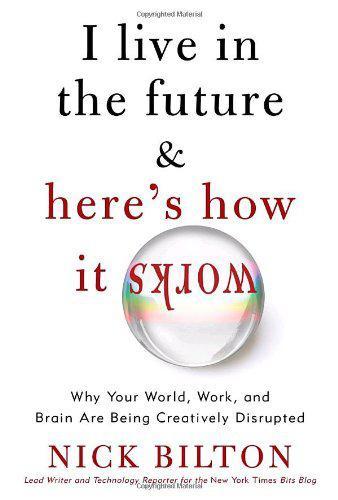
I Live in the Future & Here's How It Works: Why Your World, Work, and Brain Are Being Creatively Disrupted
by
Nick Bilton
Published 13 Sep 2010
I’ve been to all-day talks and fifty-person meetings with everyone from the CEO to a lowly intern and all the players in between. I’ve also attended conferences as a panel member with other journalists and publishers to discuss this very topic. Depending on who is in the room, these conversations usually start out lamenting the death of newspapers and magazines and quickly move to asking how we will ever be able to charge people to access news online. I have heard over and over that young people won’t pay for anything. Movie producers, publishers, and musicians argue that kids have been raised to think content is free and they have a God-given right to take it.
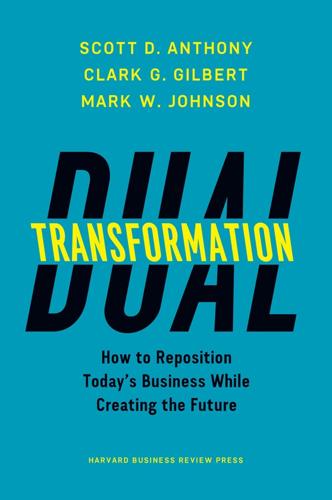
Dual Transformation: How to Reposition Today's Business While Creating the Future
by
Scott D. Anthony
and
Mark W. Johnson
Published 27 Mar 2017
Cross-company interaction Largely operate in silos Regular interaction between functions or geographies Regular interaction between functions and geographies Openness to experimentation No means to design and run experiments Experiments run with approval from top leaders Experiments part of day-to-day operations Idea sharing Ideas shared only when they are “perfect” Ideas shared when they are well documented Rough (but well thought out) ideas are shared to get fast feedback Failure tolerance Failure carries heavy stigma No penalties for the “right kind” of failure Learning from failure celebrated equally with commercial success Number of answers Weighting × 1 × 3 × 5 Total score Total 8–14 Hostile to curiosity 15–22 Pockets of curiosity 23–29 Foundations of curiosity 30+ Culture of curiosity Notes Chapter 1 Steve Sasson “that’s cute” quote: Claudia H. Deutsch, “At Kodak, Some Old Things Are New Again,” New York Times, May 2, 2008. Decline in newspaper advertising revenue: Henry Blodget, “And Now Let Us Gasp In Astonishment At What Just Happened To The Newspaper Business,” Business Insider, September 15, 2012, http://www.businessinsider.com/newspaper-advertising-collapse-2012-9. Jim Balsillie interview: CBC, The Hour, April 1, 2008, https://www.youtube.com/watch?
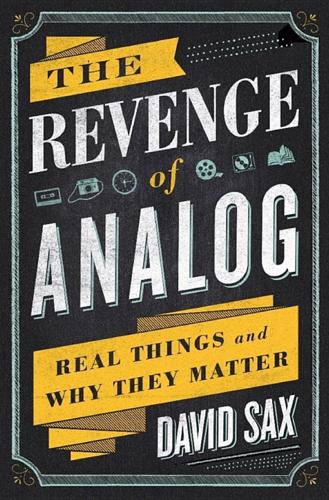
The Revenge of Analog: Real Things and Why They Matter
by
David Sax
Published 8 Nov 2016
When the trio began calling British newspaper printers to get quotes on printing Things Our Friends Put on the Internet in 2008, they ran into a problem. Newspaper printing presses were set up to print large quantities of newspapers at once—tens of thousands of copies—and even though these printing plants had been greatly diminished by a decline in newspaper sales, small print runs were uneconomical. They finally found a printer willing to print one thousand copies of Things Our Friends Put on the Internet in 2008, gave a bunch away, and put the rest for sale on their own blogs. Surprisingly, they sold out. The three friends had stumbled on two crucial things that great businesses are made of: a market for a product (custom newspapers), and underused capacity in the industry serving them.

Googled: The End of the World as We Know It
by
Ken Auletta
Published 1 Jan 2009
By the end of 2005, the company had indexed 8 billion Web pages in 116 languages; its revenues soared to $6.1 billion and its net income to $1.5 billion. Meanwhile, the tide was running against traditional media. In December of 2005, 77 percent of Americans had Internet access at work and 37 percent of all adults had high-speed access to the Internet. The slight but steady decline in newspaper circulation suddenly steepened in 2004 and 2005. The circulation of daily newspapers would plunge 6.3 percent between 2003 and 2006, with Sunday circulation falling 8 percent. Newspaper advertising revenues, which had grown on average in the high single digits since 1950, beginning in 2001 fell in four of the next seven years, and in 2006 began to fall more steeply.
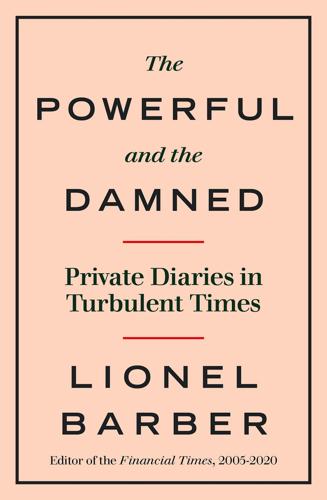
The Powerful and the Damned: Private Diaries in Turbulent Times
by
Lionel Barber
Published 5 Nov 2020
This was part of a wider tour of the Middle East, including four days in Syria and an interview with Benjamin Netanyahu in Jerusalem where the future Israeli prime minister prefigured the end of a separate Palestinian state. The third section focuses on the digital revolution in media in the period 2010–14 which accelerated the decline in newspapers and ushered in a new age of fragmentation. In the UK, I watched an ‘old media’ phone-hacking scandal unfold which forced the closure of Rupert Murdoch’s saucy tabloid, the News of the World. This led to the Leveson inquiry into the conduct and regulation of the press which consumed my attention for almost two years.
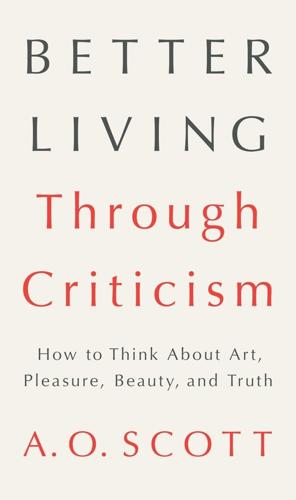
Better Living Through Criticism: How to Think About Art, Pleasure, Beauty, and Truth
by
A. O. Scott
Published 9 Feb 2016
The critic’s inky, pulpy native habitat, a sometimes mean and shabby place but a home all the same, is threatened, like so much else, by the blindingly rapid rise of digital media, which has already, in a little more than a decade, decisively transformed the world of print and may yet kill it off entirely. Farseeing media mystics and hardheaded business analysts routinely show up on social media, on television, and between hard covers to prophesy the death of newspapers, the evolution of books and magazines into e- and app versions of their former selves, and the imminent obsolescence of all the old ways of doing things. Their visions grow less outlandish and more self-evident every day. There is no question that the world of printed discourse, in which criticism has occupied a small but well-appointed corner, is undergoing enormous change.
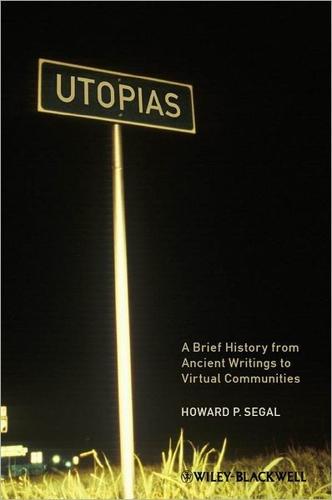
Utopias: A Brief History From Ancient Writings to Virtual Communities
by
Howard P. Segal
Published 20 May 2012
Colts, 1958, and the Birth of the Modern NFL (National Football League); Howard Bryant’s The Last Hero: A Life of Henry Aaron; David Maraniss’ Rome 1960: The Olympics that Changed the World; and, boldest of all, Fred Kaplan’s 1959: The Year that Changed Everything. Or, as a Boston Globe columnist wrote in 2005, “This has to be the Golden Age of Apocalyptic Presentiments. The death of newspapers. The death of glaciers. An Atlantic Monthly writer The Resurgence of Utopianism 191 recently speculated on the death of death” because of healthy habits.10 Ironically, a genuine and profound change in the common conceptualization of technology has not been sufficiently appreciated. Whereas throughout most of the twentieth century science and technology were commonly conceived as the solution to widely acknowledged large-scale problems such as poverty, education, irrigation, and water and electrical power, in recent decades science and technology have increasingly come to be viewed as the fulfillment on a small scale of individual needs and desires, ranging from birth control pills to online college degrees to virtual travel to cyberspace relationships.
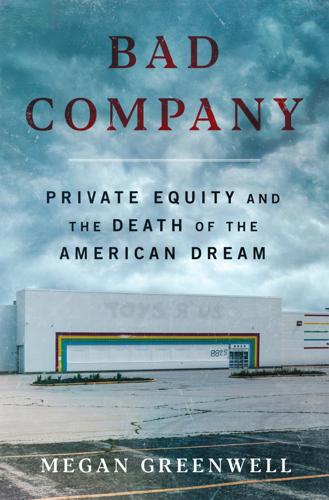
Bad Company
by
Megan Greenwell
Published 18 Apr 2025
She told him she couldn’t take the job for less than $75,000 (though she told Robert privately she’d accept regardless). Within an hour, Lorenz called back with a new offer: $76,000. She said yes on the spot. After seven years at Gannett, she walked away from the company for good. The next day, Robert proposed at Devils Tower. She said yes to that too. * * * BY THEN, THE SLOW DEATH of American newspapers had escalated into a full-blown crisis—thanks in large part to the two biggest chains in America, Gannett and Alden. It didn’t matter if a given newspaper was the only source of reliable information in its community. It didn’t matter if the paper had been sustainable until its private equity owners sold off its real estate and captured its remaining profits as dividends.
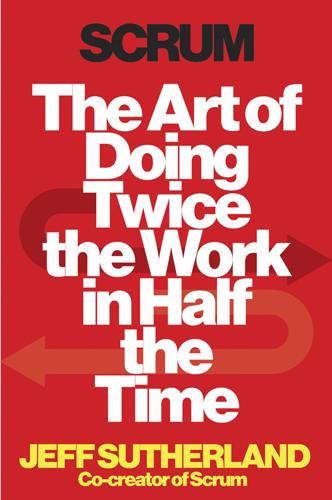
Scrum: The Art of Doing Twice the Work in Half the Time
by
Jeff Sutherland
and
Jj Sutherland
Published 29 Sep 2014
Apple famously does this with all their products, often building a dozen fully functioning prototypes before organizing a shoot-out to see which one is the best. This allows different ideas to be expressed quickly without a massive investment. Financial risk is what causes most companies to fail. They’ve built something cool, but they can’t sell it for enough to actually make a profit. A classic example of this is online journalism and the death of the newspaper. When the web first exploded in the nineties, newspapers were eager to get their content on the Internet. Some newspaper chiefs figured that, off-line or on, people would pay to advertise, so they made the content free. The problem, of course, was that advertisers were willing to pay far less money for online ads than print ads.
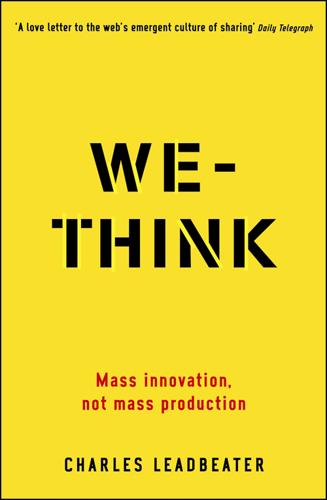
We-Think: Mass Innovation, Not Mass Production
by
Charles Leadbeater
Published 9 Dec 2010
This view might offer some comfort to people who are worried about the web: we might have more time to get used to the web than we initially thought. The changes it brings might be evolutionary rather than disruptive. Yet if the Edgerton view is correct it would also mean that the changes we have seen in just the first decade of the mass adoption of the web – the complete upheaval in the music recording industry, the savage decline in US newspapers, the disappearance of many youth magazines, the quick creation of new media giants like Google – these might just be the tip of an iceberg. We have another fifty years of change of this kind to come and the scale of the upheavals may be even greater as the technology becomes widely adopted and gains momentum.
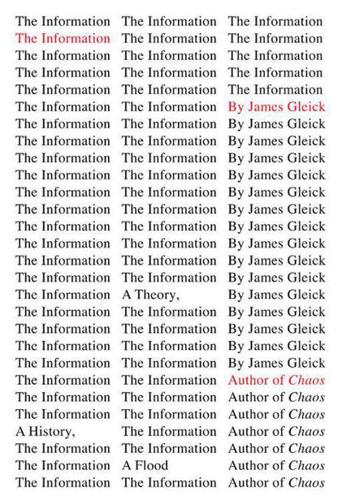
The Information: A History, a Theory, a Flood
by
James Gleick
Published 1 Mar 2011
.♦ In England a writer for The Morning Chronicle described the thrill of receiving his first report across the Cooke-Wheatstone telegraph line, the first instalment of the intelligence by a sudden stir of the stationary needle, and the shrill ring of the alarum. We looked delightedly into the taciturn face of our friend, the mystic dial, and pencilled down with rapidity in our note-book, what were his utterances some ninety miles off.♦ This was contagious. Some worried that the telegraph would be the death of newspapers, heretofore “the rapid and indispensable carrier of commercial, political and other intelligence,”♦ as an American journalist put it. For this purpose the newspapers will become emphatically useless. Anticipated at every point by the lightning wings of the Telegraph, they can only deal in local “items” or abstract speculations.
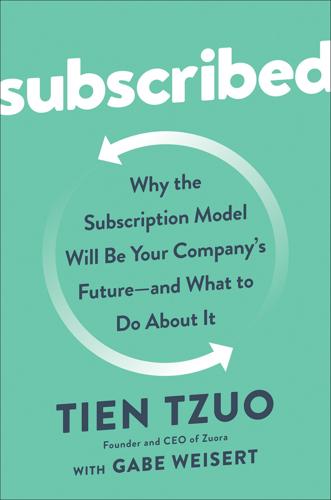
Subscribed: Why the Subscription Model Will Be Your Company's Future - and What to Do About It
by
Tien Tzuo
and
Gabe Weisert
Published 4 Jun 2018
Meanwhile, airline executives are swapping notes with digital media experts around topics like churn, retention, and customer lifetime value. Train companies are moving beyond thinking about customer segmentation and into thinking about individual customers themselves. Things are becoming unstuck. It’s pretty exciting. CHAPTER 5 COMPANIES FORMERLY KNOWN AS NEWSPAPERS So much for the death of the newspaper industry. A recent Nielsen Scarborough study found that more than 169 million US adults now read newspapers every month, in print, online, or on a mobile device. That’s almost 70 percent of the adult population. According to the latest Reuters Institute Digital News Report, The New York Times, The Wall Street Journal, and The New Yorker all gained hundreds of thousands of new digital subscribers in 2017.

Life Inc.: How the World Became a Corporation and How to Take It Back
by
Douglas Rushkoff
Published 1 Jun 2009
As an independent publication run by the Bancroft family’s Dow Jones company since 1902, the Journal’s articles described only the process through which Time Warner’s “brands” would be updated, its divisions made more efficient, and its overpaid staff trimmed down. Within a few years, however, it was The Wall Street Journal fending off an unsolicited $5 billion offer from Rupert Murdoch. A pervasive feeling among investors that print publications were imperiled by the Internet had led to a decline in all newspaper stock prices—making the Journal an easy target, even though its website was one of the few profitable online newspaper ventures, earning far more than its print edition. All of a sudden the tables were turned. Editors who had long argued for free-market principles now saw the benefit in keeping a company small and independent—especially after it had gained over a hundred years of reputation and competency in its field.

Kill All Normies: Online Culture Wars From 4Chan and Tumblr to Trump and the Alt-Right
by
Angela Nagle
Published 6 Jun 2017
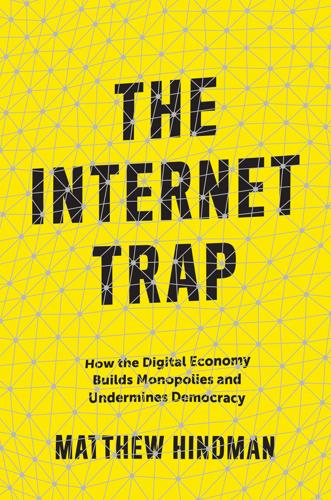
The Internet Trap: How the Digital Economy Builds Monopolies and Undermines Democracy
by
Matthew Hindman
Published 24 Sep 2018
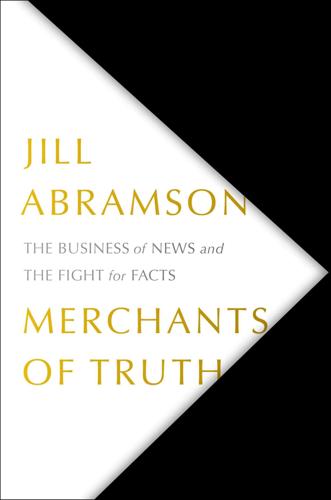
Merchants of Truth: The Business of News and the Fight for Facts
by
Jill Abramson
Published 5 Feb 2019
Clay Shirky, a journalism professor at New York University, wrote an influential article called “Newspapers and Thinking the Unthinkable.” The unthinkable was the total disappearance of the printed product, but Shirky had a decidedly different point of view on that. He argued that as long as journalism itself survived, the eventual death of newspapers would not be a tragedy. He saw the birth of the internet as a profound and exciting revolution that, akin to Gutenberg’s introduction of the printing press in the 15th century, democratized the flow of information. He chastised newspaper publishers for refusing to see the futility of their old business model and urged them to innovate digitally instead of singing the same old song of “You’ll miss us when we’re gone.”

Makeshift Metropolis: Ideas About Cities
by
Witold Rybczynski
Published 9 Nov 2010
But the long-term effects of new technologies are often unpredictable. The telephone is, on the face of it, a decentralizing device. Yet telephone communication made working in high-rise office buildings practicable, which in turn produced the concentrated central business district. When people started commuting in cars, an unexpected fallout was the death of the evening newspaper, which used to be read on the streetcar trip home. People couldn’t read in their cars, but they could listen to the radio, and that moribund medium found new life. Who could have foreseen that the combination of car radios and cellular phones would give rise to a new format, talk radio, and a new and potent political force, the talk-radio host?

Don't Be Evil: How Big Tech Betrayed Its Founding Principles--And All of US
by
Rana Foroohar
Published 5 Nov 2019
While I didn’t write about this episode myself at the time, there were a variety of articles published detailing various parts of the meeting, including Hannah Clark’s piece “The Google Guys In Davos” (Forbes, January 26, 2007), as well as one from the Financial Times’s Andrew Edgecliffe-Johnson, with whom I now work (“The Exaggerated Reports of the Death of the Newspaper,” Financial Times, March 30, 2007). 4. Sheila Dang, “Google, Facebook Have Tight Grip on Growing US Online Ad Market,” Reuters, June 5, 2019. 5. Keach Hagey, Lukas I. Alpert, and Yaryna Serkez, “In News Industry, a Stark Divide Between Haves and Have-Nots,” The Wall Street Journal, May 4, 2019. 6.
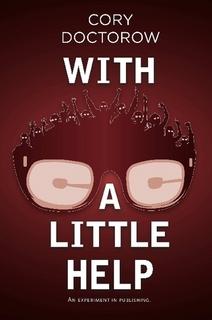
With a Little Help
by
Cory Efram Doctorow
,
Jonathan Coulton
and
Russell Galen
Published 7 Dec 2010
The problem is, every now and then there's an unanticipated seismic shift in the world, something that changes everything and creates a corner we can't see around. The most recent of these was the potent combination of digital information and global connectivity that transformed the end of the 20th century. I like to call it "The Internet," and mark my words, it's going to be very big. The struggling record industry, the death of the newspaper, the rise of LOLCats - these are just warning shots. Everything is going to get swallowed up eventually, and it's all going to get loud and messy and complicated. Forget space travel, this is the future we need to imagine now, and quickly, before it overtakes us. 29 Luckily, we have Cory Doctorow; he thinks about the Internet, a lot.
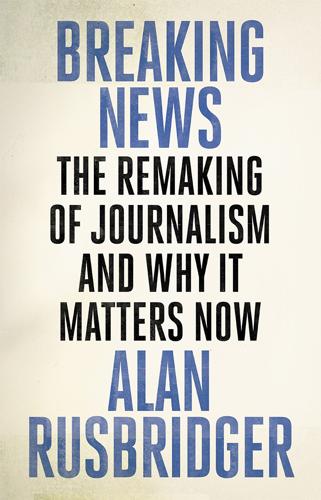
Breaking News: The Remaking of Journalism and Why It Matters Now
by
Alan Rusbridger
Published 14 Oct 2018
There would have to be less emphasis on ‘hard news’ and more on entertainment and syndicated features. An Enders chart showed newspaper circulations declining steadily through to 2028, by which time some of them were close to hitting the ground. Enders noted that newspapers had been on a frantic buying spree trying to snap up ready-made websites that could make up for the decline in print advertising. Regional newspapers alone had splashed out £400 million in 18 months trying to get new footholds in car, property or jobs advertising. But they were ambivalent about the new opportunities – simultaneously reluctant to let go of a world in which they could charge £5,000 a page in favour of the £400 equivalent online.

How to Be Right: In a World Gone Wrong
by
James O'Brien
Published 2 Nov 2018
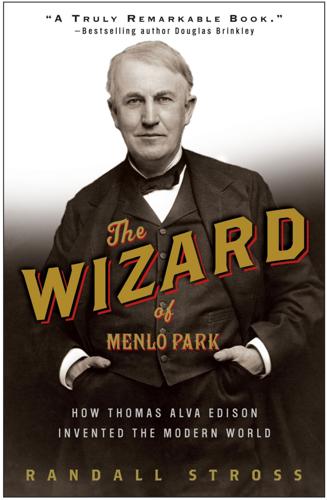
The Wizard of Menlo Park: How Thomas Alva Edison Invented the Modern World
by
Randall E. Stross
Published 13 Mar 2007
He was the same medical authority who years before had said that clothing that pinched was literally a killer: “Pressure ANYWHERE means that a certain part of your body is deprived of its natural flood. And starvation and death begin where the body is pressed and choked.” The theories did not protect him from kidney failure. In August 1931, he collapsed in his living room and spent ten days near death, while a battalion of newspaper reporters turned Glenmont’s ten-car garage into a pressroom. He moved out of immediate danger, but his energy had disappeared and familiar routines were abandoned. By October, he was too weak to leave bed and remained “mentally drowsy,” according to his doctor; he passed in and out of a coma and hovered on the edge of death for two weeks.

The Content Trap: A Strategist's Guide to Digital Change
by
Bharat Anand
Published 17 Oct 2016
It is interactive and searchable. It’s hard to think of another product where the digital version seems so vastly superior. Clearly, these factors are the reason for the havoc wreaked on the news industry. Except that they aren’t. The real story is different. Figure 2 shows the steady decline over time in U.S. newspaper readership by household. Figure 2: U.S. Newspaper Circulation per Household over Time. (Google’s chief economist, Hal Varian, constructed these data from Newspaper Association of America circulation figures for all U.S. newspapers.) The decline is sobering and perhaps unsurprising in light of the Internet.
…
Although per-household readership declined during the 1950s, ’60s, and ’70s, overall population grew; then when population growth slowed beginning in the 1980s, so did aggregate newspaper readership. Even then, things weren’t so bad: Many newspapers increased their prices, offsetting the decline in readership. For the top twenty-five newspapers, prices increased by an average of 50 percent in real terms during the past two decades, causing circulation revenues to increase between 1994 and 2012, even as readership fell. So fixed costs aren’t the culprit; it must be something else. That brings us to a subtler but far more important problem, one that has to do with connections, not content or cost structure.
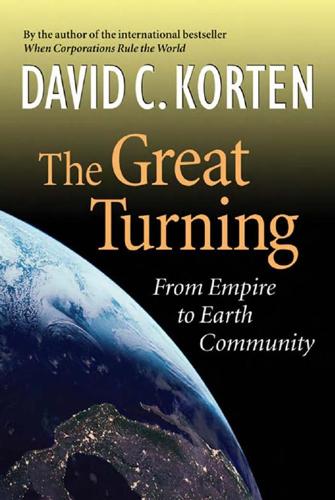
The Great Turning: From Empire to Earth Community
by
David C. Korten
Published 1 Jan 2001
Television was transforming how people used their time and related to the world. Beginning about 1960, passive forms of participation in public life began displacing more active forms. People were patronizing Wake-Up Call 219 fast-food outlets, professional sporting events, and gambling casinos with greater frequency. There were corresponding declines in voter participation, newspaper readership, Parent Teacher Association membership, union membership, frequency of family meals, philanthropic giving, and perceptions of honesty and morality.3 Relationships among people were not so much changing as simply eroding. People were feeling increasingly vulnerable and disconnected.
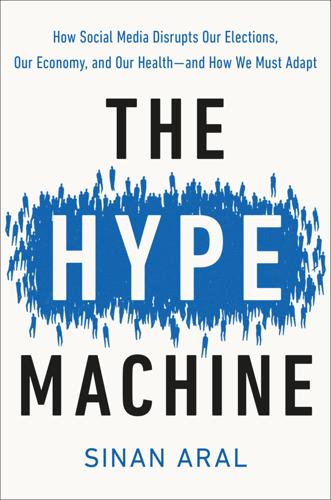
The Hype Machine: How Social Media Disrupts Our Elections, Our Economy, and Our Health--And How We Must Adapt
by
Sinan Aral
Published 14 Sep 2020
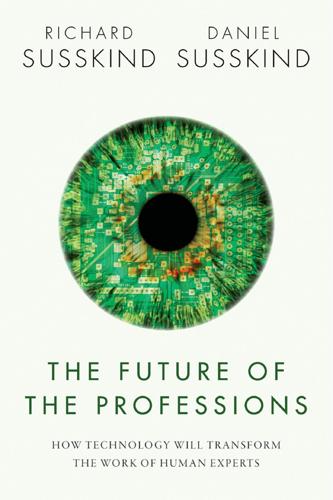
The Future of the Professions: How Technology Will Transform the Work of Human Experts
by
Richard Susskind
and
Daniel Susskind
Published 24 Aug 2015
Total workforce data from American Society of News Editors <http://asne.org/> (accessed 7 March 2015). 176 ‘The Late Edition’, Economist, 26 Apr. 2014. 177 George Brock, Out of Print: Newspapers, Journalism, and the Business of News in the Digital Age (2013), 149. 178 ‘Internet Overtakes Newspapers as News Outlet’, Pew Research Center, 23 Dec. 2008 <http://www.people-press.org> (accessed 7 March 2015). 179 Andrea Caumot, ‘12 trends shaping digital news’, Pew Research Center, 16 Oct. 2013 <http://www.pewresearch.org> (accessed 7 March 2015). 180 ‘Internet Access—Households and Individuals 2014’, Office for National Statistics, 7 Aug. 2014 <http://www.ons.gov.uk/ons/index.html> (accessed 7 March 2015). 181 ‘The Internet Economy on the Rise: Progress since the Seoul Declaration’, OECD, Sept. 2013. 182 ‘Digital News Report 2014’, Reuters Institute for the Study of Journalism <http://www.digitalnewsreport.org> (accessed 7 March 2015). 183 Eric Alterman, ‘Out of Print: The Death and Life of the American Newspaper’, New Yorker, 31 Mar. 2008. 184 ‘The Late Edition’, Economist, 26 Apr. 2014. 185 ‘Amid Criticism, Support for Media’s “Watchdog” Role Stands Out’, Pew Research Center, 8 Aug. 2013 <http://www.pewresearch.org > (accessed 7 March 2015). 186 Clay Shirky, ‘Last Call: The End of the Printed Newspaper’, Medium, 19 Aug. 2015 <https://medium.com> (accessed 7 March 2015). 187 The Evening Standard in London, for example, was making annual losses of £30 million before 2009.
…
Allen, Woody, ‘Mechanical Objects’, Standup Comic, 1964–1968, transcript at <http://www.ibras.dk/comedy/allen.htm#Mechs> (accessed 23 March 2015). Alloway, Tracy, and Arash Massoudi, ‘Goldman Sachs leads $15m financing of data service for investors’, Financial Times, 23 Nov. 2014 <http://www.ft.com> (accessed 8 March 2015). Alterman, Eric, ‘Out of Print: The Death and Life of the American Newspaper’, New Yorker, 31 Mar. 2008. Andersen, Erika, ‘Why Writing a Book is Good Business’, Forbes, 12 Oct. 2012 <http://www.forbes.com> (accessed 8 March 2015). Andersen, Michael, ‘Four crowdsourcing lessons from the Guardian’s (spectacular) expenses-scandal experiment’, NiemanLab, 23 June 2009 <http://www.niemanlab.org> (accessed 8 March 2015).
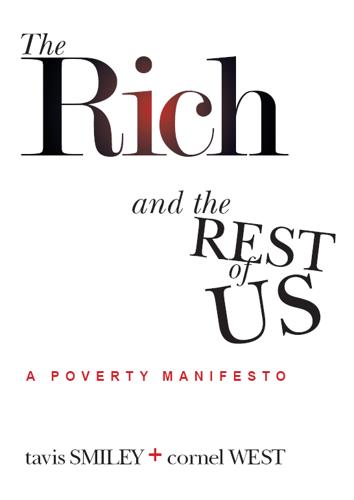
The Rich and the Rest of Us
by
Tavis Smiley
Published 15 Feb 2012
Inspired by religious convictions and a sense of moral obligation, the agencies were much more than institutions for the destitute. Settlement house leaders became vocal and visible advocates for social-welfare reform, arguing that poverty was not necessarily a character flaw but rather a state of being agitated by multiple factors—slave wages, disease, and the death of a spouse. Advocates challenged newspapers’ attacks on the poor and took on Industrial Age barons accused of exploiting women and children in sweat shops, factories, and mines. In a sense, settlements houses were early America’s think tanks, where recruiting, training, researching, and policy-setting were incorporated into everyday activities.
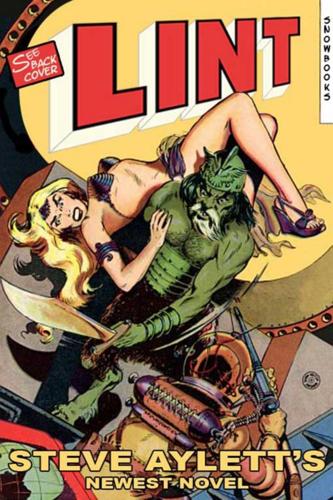
Lint
by
Steve Aylett
Published 2 May 2005

Makers
by
Chris Anderson
Published 1 Oct 2012

Working in Public: The Making and Maintenance of Open Source Software
by
Nadia Eghbal
Published 3 Aug 2020

What Would Google Do?
by
Jeff Jarvis
Published 15 Feb 2009
The blockbuster strategy always was a gamble; as it continues, it is a bigger gamble than ever. The mass market’s hold over the economy diminishes. The mass market was a short-lived phenomenon. It began with the large-scale adoption of television in the mid-1950s—and the consequent death of second and third newspapers in most American cities, yielding one-size-fits-all mass products in both broadcast and print. It was in the mid-1980s, in the age of the remote control, that I became the TV critic at People magazine, the last great mass magazine launched in America. In its first decade, the magazine was pretty much a piece of cake to run: Put a star in a big show on the cover and watch it sell.

Me! Me! Me!
by
Daniel Ruiz Tizon
Published 31 May 2016
With her dad being a large, powerfully built man whose knuckles alone were almost equal in size to my hands, this was a rather unnerving thought. I’d lay awake at night visualising him slapping me around like a rag doll at the service as he screamed at me to look at the open topped casket. I became paranoid, poring over the Births, Deaths and Marriages sections of local newspapers on a weekly basis for any news, barging my way through the crowds at any road accident to make sure the stricken pedestrian wasn't my ex. Relationship experts say that last year alone saw the highest number of break ups in 12 years, with a staggering 27% of those coming via, yes, you guessed it, text.
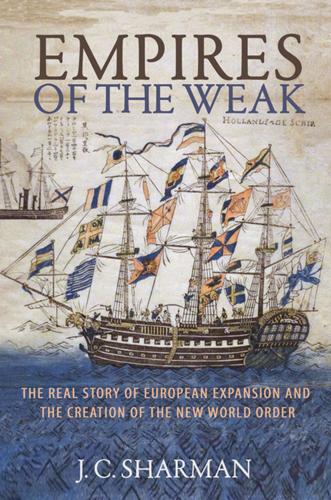
Empires of the Weak: The Real Story of European Expansion and the Creation of the New World Order
by
Jason Sharman
Published 5 Feb 2019
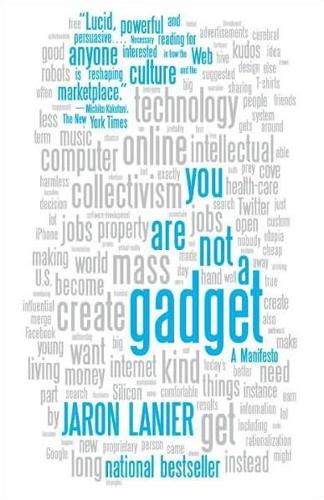
You Are Not a Gadget
by
Jaron Lanier
Published 12 Jan 2010
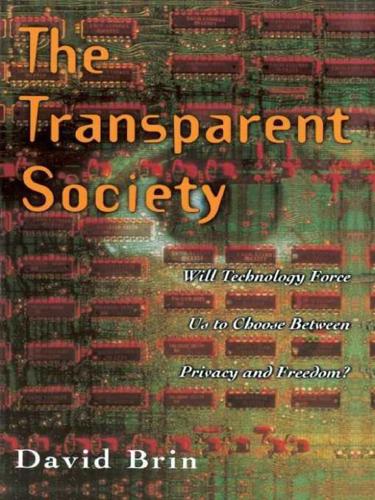
The Transparent Society: Will Technology Force Us to Choose Between Privacy and Freedom?
by
David Brin
Published 1 Jan 1998
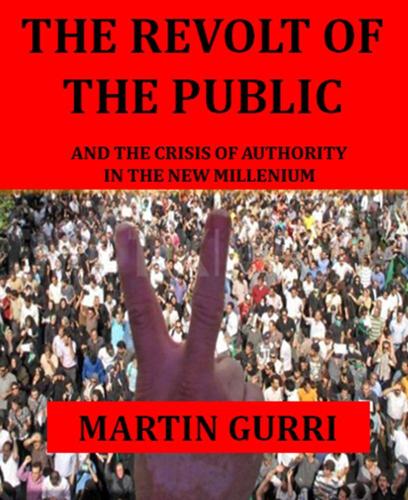
The Revolt of the Public and the Crisis of Authority in the New Millennium
by
Martin Gurri
Published 13 Nov 2018
The Revolt of the Public And The Crisis of Authority in the New Millennium By Martin Gurri Text Copyright © 2014 Martin Gurri All Rights Reserved Table of Contents Chapter 1 Prelude to a Turbulent Age Chapter 2 Hoder and Wael Ghonim Chapter 3 My Thesis Chapter 4 What the Public Is Not Chapter 5 Phase Change 2011 Chapter 6 A Crisis of Authority Chapter 7 The Failure of Government Chapter 8 Nihilism and Democracy Chapter 9 Choices and Systems Chapter 10 Finale for Skeptics Bibliography About the Author Chapter 1 Prelude to a Turbulent Age Can there be a connection between online universities and the serial insurgencies which, in media noise and human blood, have rocked the Arab Middle East? I contend that there is. And the list of unlikely connections can easily be expanded. It includes the ever faster churning of companies in and out of the S&P 500, the death of news and the newspaper, the failure of established political parties, the imperial advance across the globe by Facebook and Google, and the near-universal spread of the mobile phone. Should anyone care about this tangle of bizarre connections? Only if you care how you are governed: the story I am about to tell concerns above all a crisis of that monstrous messianic machine, the modern government.
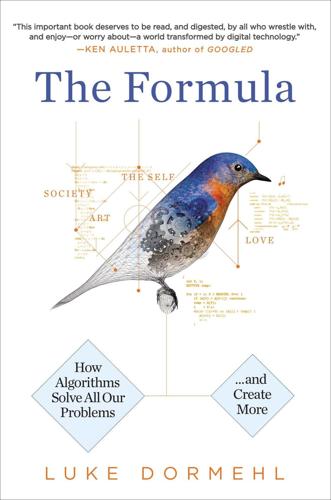
The Formula: How Algorithms Solve All Our Problems-And Create More
by
Luke Dormehl
Published 4 Nov 2014
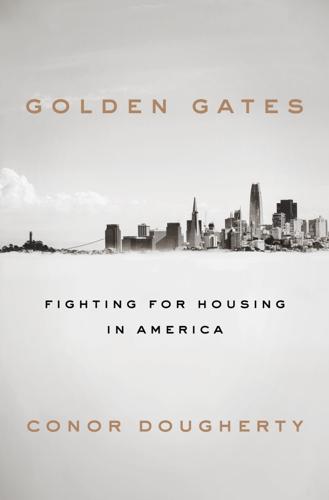
Golden Gates: Fighting for Housing in America
by
Conor Dougherty
Published 18 Feb 2020

The End of Big: How the Internet Makes David the New Goliath
by
Nicco Mele
Published 14 Apr 2013
In each of these previous events, professional journalists working in the mainstream media played a crucial and even iconic role in delivering and distributing the news to a mass audience. In the case of President Kennedy’s assassination, Walter Cronkite’s broadcasts on CBS News came to stand as a shared cultural experience for millions of Americans. Who was not moved watching the great journalist choke up while announcing the president’s death? The names of two respected newspaper journalists—Bob Woodward and Carl Bernstein—likewise became indelibly linked to the Watergate scandal. Network television footage of crowds at the Berlin Wall in the darkness of November 9, 1989, provided unforgettable, collective images of the end of the Cold War, echoing President Reagan’s powerful rhetoric a few years earlier: “Mr.
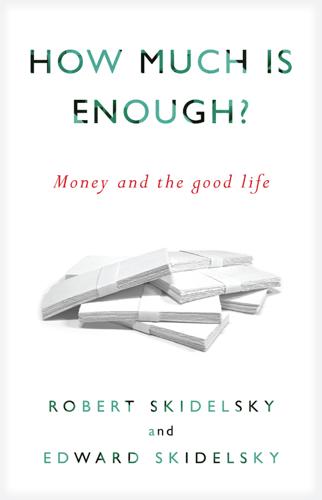
How Much Is Enough?: Money and the Good Life
by
Robert Skidelsky
and
Edward Skidelsky
Published 18 Jun 2012
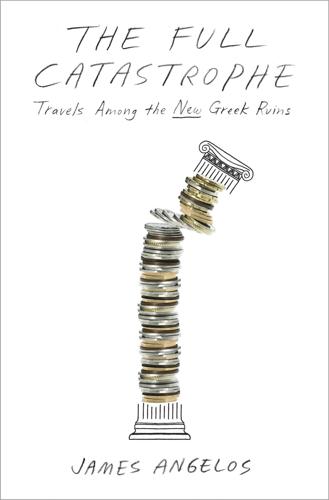
The Full Catastrophe: Travels Among the New Greek Ruins
by
James Angelos
Published 1 Jun 2015
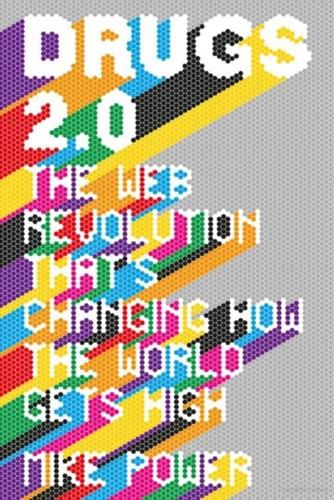
Drugs 2.0: The Web Revolution That's Changing How the World Gets High
by
Mike Power
Published 1 May 2013
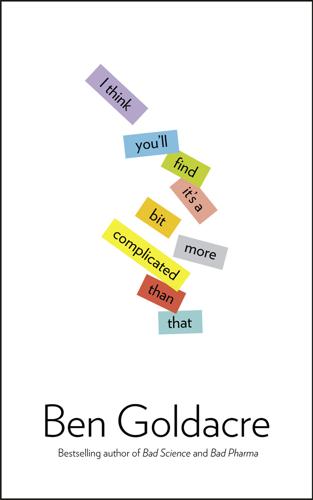
I Think You'll Find It's a Bit More Complicated Than That
by
Ben Goldacre
Published 22 Oct 2014
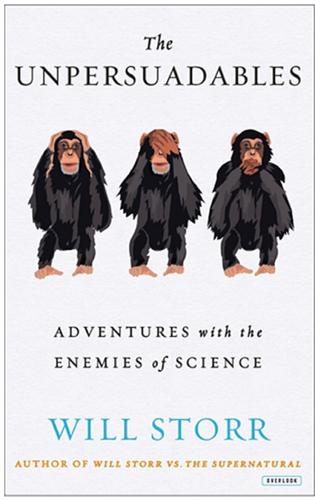
The Unpersuadables: Adventures With the Enemies of Science
by
Will Storr
Published 1 Jan 2013
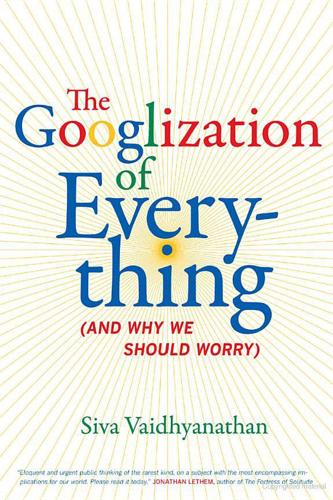
The Googlization of Everything:
by
Siva Vaidhyanathan
Published 1 Jan 2010
But its mastery at optimizing its pages for Google Web Search has made it a frequent user destination for news and much more effective than many of the sources that it aggregates. 43. Todd Gitlin, “Journalism’s Many Crises,” OpenDemocracy, May 20, 2009, www.opendemocracy.net; Leonard Downie and Michael Schudson, “The Reconstruction of American Journalism,” Columbia Journalism Review, December 2009, 28–51; John Nichols, “The Death and Life of Great American Newspapers,” Nation, April 6, 2009, 11; Zachary M. Seward, “How the Associated Press Will Try to Rival Wikipedia in Search Results,” Nieman Journalism Lab, August 13, 2009; Zachary M. Seward, “Google CEO Eric Schmidt Envisions the News Consumer of the Future,” Nieman Journalism Lab, November 4, 2009. 44.
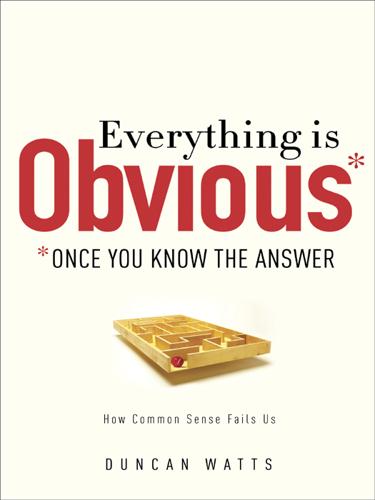
Everything Is Obvious: *Once You Know the Answer
by
Duncan J. Watts
Published 28 Mar 2011
Adler, Moshe. 1985. “Stardom and Talent.” American Economic Review 75 (1):208–12. Alicke, Mark D., and Olesya Govorun. 2005. “The Better-Than-Average Effect.” In The Self in Social Judgment, ed. M. D. Alicke, D. A. Dunning, and J. I. Krueger. 85–106. Alterman, Eric. 2008. “Out of Print: The Death and Life of the American Newspaper.” The New Yorker, March 31. Anderson, Philip W. 1972. “More Is Different.” Science 177 (4047):393–96. Andreozzi, Luciano. 2004. “A Note on Paradoxes in Economics.” Kyklos 57 (1):3–20. Aral, Sinan, Lev Muchnik, and Arun Sundararajan. 2009. “Distinguishing Influence-Based Contagion from Homophily-Driven Diffusion in Dynamic Networks.”
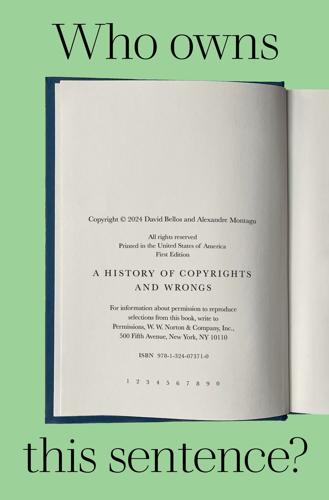
Who Owns This Sentence?: A History of Copyrights and Wrongs
by
David Bellos
and
Alexandre Montagu
Published 23 Jan 2024
In England, however, the heavyweight Times of London pursued a long campaign to acquire control of its own news, which was most certainly copied and reproduced by other U.K. journals and by newspapers the world over, as it was widely considered to be an authoritative source of “facts”. It sued St James’s Gazette for reprinting articles verbatim, to be met with the response that copying was a well-established custom “and one on which The Times itself has frequently acted”. In the trial, The Times was forced to concede that if it published a report of the death of a foreign leader, other newspapers would be free to restate the fact but not (in its view) the report itself. The judge resolved the issue by stating that although there was no copyright in news, “there is or may be copyright in the particular forms of language … by which information is conveyed” and as a result “the cablegrams, telegrams and communications” which the paper published were eligible for copyright protection.152 As in the disputes in America at that time, what The Times was worried about were evening newspapers reprinting “hot news” within hours of it appearing in the morning editions – and to protect the revenue it needed to fund its extensive network of reporters and investments in expensive telecommunications technology.

The Dictionary People: The Unsung Heroes Who Created the Oxford English Dictionary
by
Sarah Ogilvie
Published 17 Oct 2023

Chaos Monkeys: Obscene Fortune and Random Failure in Silicon Valley
by
Antonio Garcia Martinez
Published 27 Jun 2016

The Sinner and the Saint: Dostoevsky and the Gentleman Murderer Who Inspired a Masterpiece
by
Kevin Birmingham
Published 16 Nov 2021
He believed that individuals are free only when they submit to a community’s welfare, and that the general will expresses what’s best for the whole, not the sum of selfish interests. But by the 1830s, all this was obscured by overzealous readers and isolated passages from the book that Lacenaire could not stop reading. “The State, set on fire by civil wars, is born again, so to speak, from its ashes, and takes on anew, fresh from the jaws of death, the vigour of youth.” Newspapers seized upon Lacenaire’s interest in The Social Contract when it was revealed during his trial. It was “the symbol of his life,” one declared. The underlying fear of the age of revolutions was that it might encourage righteous violence and principled murder. If one can rightfully take up arms against an unjust government, then surely one could take up arms against an unjust society.
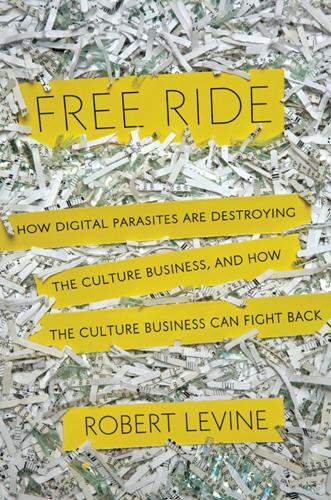
Free Ride
by
Robert Levine
Published 25 Oct 2011

The Empathic Civilization: The Race to Global Consciousness in a World in Crisis
by
Jeremy Rifkin
Published 31 Dec 2009

Words That Work: It's Not What You Say, It's What People Hear
by
Dr. Frank Luntz
Published 2 Jan 2007

Apollo's Arrow: The Profound and Enduring Impact of Coronavirus on the Way We Live
by
Nicholas A. Christakis
Published 27 Oct 2020
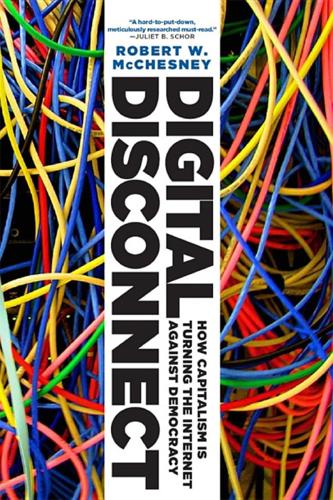
Digital Disconnect: How Capitalism Is Turning the Internet Against Democracy
by
Robert W. McChesney
Published 5 Mar 2013

Fulfillment: Winning and Losing in One-Click America
by
Alec MacGillis
Published 16 Mar 2021
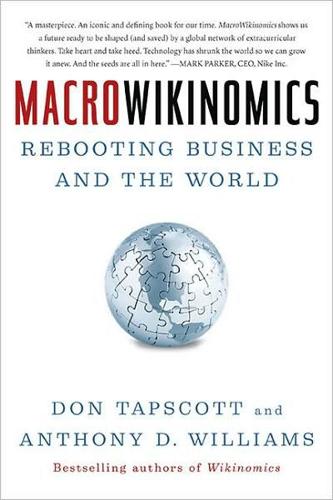
MacroWikinomics: Rebooting Business and the World
by
Don Tapscott
and
Anthony D. Williams
Published 28 Sep 2010
Amanda Ernst, “Huffington Post’s Traffic More Than Doubles Year Over Year,” mediabistro (January 19, 2010). 2. Huffington Post Company Profile, CrunchBase (April 28, 2010). 3. Erick Schonfeld, “The Huffington Post Starts to Give Out Badges to Readers,” TechCrunch (April 29, 2010). 4. Jonah Peretti as reported in “The Death and Life of the American Newspaper,” The New Yorker (March 23, 2008). 5. Andrew Lipsman, “Huffington Post Defies Expectations, Reaches New Heights Post-Election,” Comscore (June 4, 2009). 6. Sam Stein, “Bailed-Out Firms Distributing Cash Rewards: ‘Please Do Not Call It A Bonus,’” The Huffington Post (February 11, 2009). 7.

Overlord: D-Day and the Battle for Normandy 1944
by
Max Hastings
Published 22 Mar 2012

Manias, Panics and Crashes: A History of Financial Crises, Sixth Edition
by
Kindleberger, Charles P.
and
Robert Z., Aliber
Published 9 Aug 2011
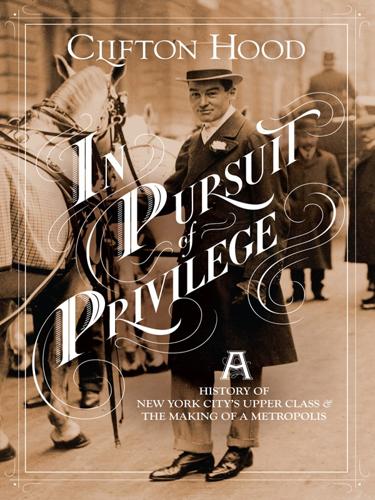
In Pursuit of Privilege: A History of New York City's Upper Class and the Making of a Metropolis
by
Clifton Hood
Published 1 Nov 2016

Global Catastrophic Risks
by
Nick Bostrom
and
Milan M. Cirkovic
Published 2 Jul 2008
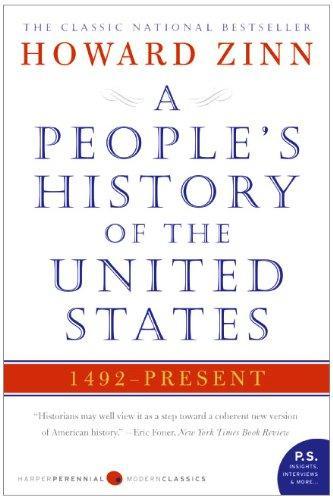
A People's History of the United States
by
Howard Zinn
Published 2 Jan 1977

The Great Bridge: The Epic Story of the Building of the Brooklyn Bridge
by
David McCullough
Published 1 Jun 2001
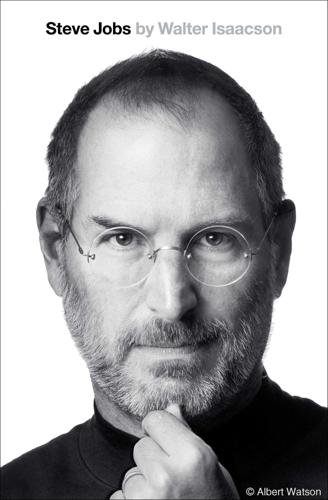
Steve Jobs
by
Walter Isaacson
Published 23 Oct 2011
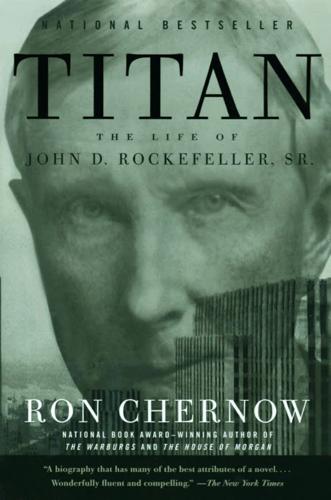
Titan: The Life of John D. Rockefeller, Sr.
by
Ron Chernow
Published 1 Jan 1997
A vigorous man with a bulldog face, Rice thrived on crossing swords with the oil trust. More than anyone else, Rice was driven mad by Standard Oil’s unjust methods and became a professional Rockefeller hater. He instigated many legislative probes of Standard Oil and in 1881 published a pamphlet entitled Black Death, an anthology of scathing newspaper exposés. For Rockefeller, Rice was nothing but a blackmailer. “He liked to harass, embarrass, annoy the Standard Oil interests with a view of enabling him to sell his quite unimportant refinery interest. . . . This is the whole story of George Rice.”69 In fairness to Rockefeller, Rice tried repeatedly to extort money from him, asking an outrageous $250,000 for a refinery Rockefeller valued at only $25,000.
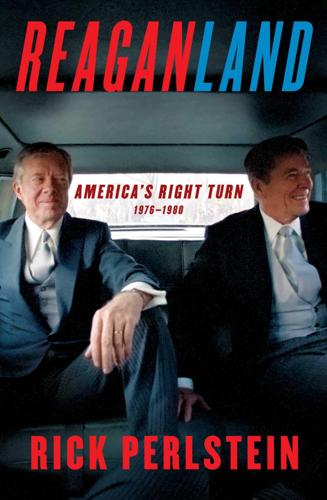
Reaganland: America's Right Turn 1976-1980
by
Rick Perlstein
Published 17 Aug 2020